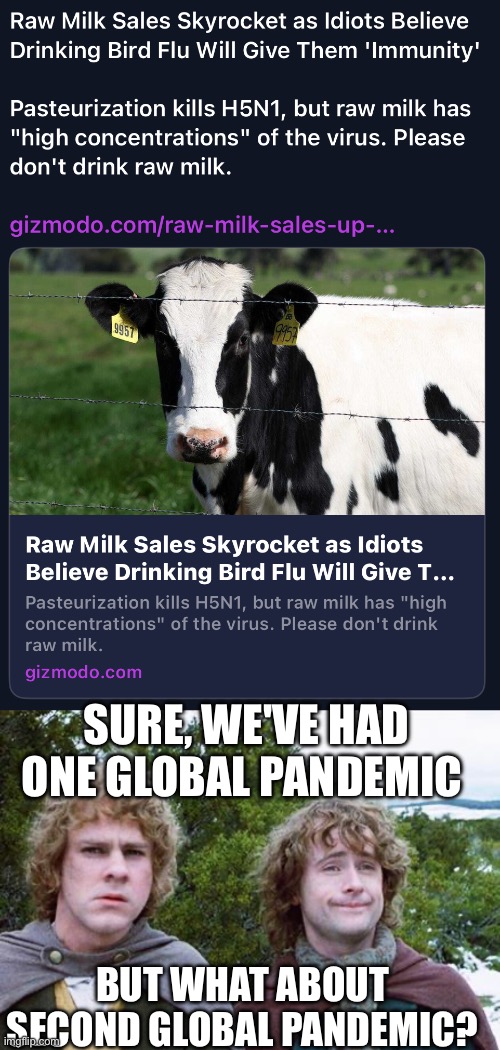this post was submitted on 15 May 2024
616 points (98.3% liked)
Memes
45728 readers
1018 users here now
Rules:
- Be civil and nice.
- Try not to excessively repost, as a rule of thumb, wait at least 2 months to do it if you have to.
founded 5 years ago
MODERATORS
you are viewing a single comment's thread
view the rest of the comments
view the rest of the comments

TLDR: If I interpreted what you are getting at, no. The rest of the comment is about questions surrounding yours that I think are more relevant.
If you inhale a certain amount of virus particles vs drinking the same amount of virus particles, the amount of virus particles that are able to infect cells would be lower in the drink than what was inhaled. So no, the amount of virus particles that can infect you would be lower in the milk.
Fun side fact: there are some routes in your gut to access your immune system, such as the lacteals. Some vaccine researchers have targeted these, but it's notoriously difficult to produce an oral vaccine that is effective as administration by other routes.
The route of infection isn't always important once an injection takes hold. If you get infected by the same virus via drinking vs inhaling, you're still infected with that virus and your body will still have to fight it off.
Quantity doesn't matter so much once you pass the bar for an active viral infection because viruses produce an obscene amount of replicates once they infect a cell. The bar for infection does vary by the pathogen and route of exposure, so it can take a much larger quantity of virus particles for an infection to take hold through your gut than through your lungs. Different viral species are able to more efficiently infect you via different routes as well.
Aside from those effects, how are differences in the route of an infection important?
The types of protection your body provides against infection varies by route. Mucous, antibodies, the types of immune cells, the density of immune cells, and environmental factors like pH and clearance of mucous (how quickly it is removed and replaced) all affect how difficult it is for a pathogen to get through and infect it's target cell type. Some examples are: your nose protects you by catching things in the mucous and then running out your nose or down your throat, your stomach is acidic and lined in mucous, so viruses can't get through as easily and are likely to be destroyed by the acid, the layers of your skin make it extremely difficult for anything to get through unless you get an open wound.
The route of the infection changes the types of immune cells that encounter the pathogen, which can affect the type of protection your body develops against that pathogen. Sometimes this is the type of cell formed, but it can also be where are most of these cells located.
A pathogen in your muscle (or an injected vaccine) will produce cells to fight the infection and cells to remember the pathogen as well as help fight an infection caused by that pathogen in the future. This can reduce the severity and length of symptoms you experience with future infections.
A pathogen in your mucous membrane (I'm mainly talking your nose and nasal-spray vaccines) will produce all of the types of protection that would be produced in your muscle, but it can also produce antibodies that will interact with the pathogen and prevent a new infection from occurring.
Vaccine researchers are trying things like nasal sprays instead of intramuscular injections in order to target this preventative immune protection. This isn't the only potential benefit, but it's one reason to do this and some vaccines are available as nasal sprays.
All of this is generalized and immunology is vastly more complex than I made it sound here. To be frank, immunology is so complex that we still largely are guessing during vaccine research. We know things, but everything in the immune system is interconnected and there are still many things we don't know. We only have part of the puzzle and are missing the picture on the box. Even when we do find an effective treatment, chances are it was an educated guess, but we don't actually know all of the mechanisms behind the protection.
Hopefully that helps make things a bit clearer.
Drinking infected milk sounds like an ineffective and potentially dangerous way to protect yourself, but frankly, it's not entirely without merit. I definitely won't be doing it.